Last updated: August 2025
When you’re applying for an apartment, an auto loan or a small‑business line of credit, you often need acceptable documents now. Getting proof of income fast can determine whether you secure the rental, close on a vehicle, or keep a financing offer alive. Landlords and underwriters must trust what they review, and disorganized files slow decisions or trigger avoidable scrutiny.
At FinancialDocsProvider.com, our role is strictly to organize and format your existing financial records so they are easy to read, reconcile and verify—without altering any numbers, dates or parties. This guide shows how to assemble same‑day packets that meet common standards in the United States, United Kingdom and Canada, what edits are lawful, and how to avoid the pitfalls that cause rejections.
Below is a list of related terms and entities you’ll encounter. Familiarizing yourself with them will make the process smoother and help you understand which forms may be requested.
- W‑2, 1099‑NEC/MISC and Schedule C (US)
- Payslips, P60/P45 and SA302 (UK)
- T4, T4A, Notice of Assessment (NOA) and T1 General (Canada)
- Bank statements, payroll reports, employment letters
- IRS, CFPB and FTC (US regulators)
- FCA and HMRC (UK regulators)
- CRA and FCAC (Canadian regulators)
- Income verification, tenancy screening, underwriting
- Redaction, OCR, PDF/A export and accessibility formatting
- Document reconciliation, version control and audit trails
Throughout this article you’ll see links to our proof‑of‑income formatting guide, our comparison of pay stubs versus bank statements and our post on how to prove income without traditional pay stubs. These resources expand on topics covered here and include examples of compliant document packages you can model for same‑day use.
What are the legal basics for fast proof of income?
There is a bright line between legitimate formatting and criminal falsification. Across the US, UK and Canada, you may enhance clarity and accessibility, but you may not alter the underlying facts. Lenders and landlords usually require independent verification; self‑certified income is not enough, and editing amounts, dates or names can constitute fraud.
In the United States, lenders cannot demand documentation just to provide a Loan Estimate, but they will require proof before final approval. The IRS treats willfully making—or helping to make—false tax documents as a felony with significant fines and potential imprisonment. In the UK, the FCA’s mortgage rules require firms to verify income from independent sources and apply anti‑fraud controls; self‑certification is not permitted. In Canada, lenders commonly ask for a proof‑of‑income statement, tax slips and a notice of assessment, and the CRA identifies fake or altered documents as a leading fraud risk.
These rules protect both applicants and lenders. Clear, truthful documentation speeds approvals, reduces follow‑up questions and avoids legal consequences. Always start with genuine records from your employer, bank or tax authority. If a document is missing or hard to read, we can help you package it correctly without changing any facts.
Compliance reminder: Nothing in this article is legal advice. When in doubt, ask the requesting party or consult qualified counsel about the specific documents they’ll accept.
Which edits are allowed on proof of income?
Once you have the right documents, you can—and should—improve their presentation. Formatting is lawful when it clarifies the content without changing it. Simple improvements like cropping, contrast adjustments, page numbering, lawful redaction and creating a single, indexed PDF help reviewers verify information quickly—especially when you need proof of income fast.
What kind of redaction is acceptable?
You may cover non‑essential personal data, such as full account numbers, Social Security numbers, National Insurance numbers or personal addresses, when policy allows. Use a solid digital rectangle rather than a marker so the redaction is permanent and professional. Keep an unredacted original in case the landlord or lender requests it later.
How can you improve readability and accessibility?
Many applicants submit blurry photos or mismatched screenshots. To improve readability and accessibility:
- Scan or photograph at 150–300 DPI and straighten any crooked images.
- Apply OCR so text is searchable, and include basic PDF tags for screen readers.
- Add page numbers, bookmarks and a brief index (“Pay Stubs,” “W‑2/T4,” “Bank Statements”).
- Use consistent fonts and spacing. Remove busy backgrounds that obscure text.
- Include all pages—even disclosure or summary pages—so datasets are complete.
- Group like‑with‑like: pay stubs together, then bank statements, then tax forms.
What about exporting and file hygiene?
Export as PDF/A or another stable format so fonts embed correctly and pages don’t shift during transmission. For color bank statements, keep original colors if they aid legibility. Avoid over‑compression that makes fine text pixelate. You may lock a file to prevent accidental edits, but avoid passwords that block reviewers.
Quick hygiene check: verify the file opens on mobile and desktop, check that bookmarks jump to the right pages, and ensure the document title and metadata are neutral (e.g., “Income‑Packet‑Aug‑2025.pdf”).
Can you add context pages?
Yes. You can include a simple cover page or index that lists the enclosed documents and provides contact details for your employer or accountant. Do not add narrative explanations that try to reconcile discrepancies. If something needs explanation—such as a gap in employment—use a separate letter signed by the relevant party (HR, accountant, etc.).
Same‑day tip: Create a reusable index template. Updating dates and document names takes minutes and helps you submit proof of income fast without sacrificing clarity.
What edits are illegal and why?
Illegal edits change facts. Examples include modifying income amounts, shifting dates, substituting payer names, removing overdrafts, or pasting logos and signatures from other documents. Doing so is fraud. Regulators may prosecute both the applicant and any service provider involved. In the US, falsifying or assisting in falsifying tax documents can trigger felony penalties, including substantial fines and imprisonment. In the UK, lenders must obtain independent evidence of income, and doctored or self‑certified documents can lead to rejection or criminal charges. In Canada, the CRA lists fake or altered documents as a top mortgage‑fraud trend.
Below is a succinct Compliance Snapshot contrasting allowed vs. prohibited edits:
- Allowed: formatting for legibility; lawful redaction; OCR and tagging; reorganizing pages; adding covers or indices; exporting to clean PDF.
- Illegal: changing amounts, dates, employer names or tax IDs; adding deposits or removing overdrafts; pasting logos or signatures; creating composite PDFs from unrelated documents; fabricating pay stubs, tax forms or bank statements.
If your documents contain errors, contact the issuer—employer, payroll provider, bank or tax authority—for corrected versions (for example, a W‑2c in the US). Do not attempt to “fix” figures yourself.
Remember: We format, organize and reconcile presentation only. We do not create, alter or simulate documents under any circumstances.
When do you need professional document formatting?
Same‑day requests arise in many contexts. Whether you’re a W‑2 employee, a gig worker or self‑employed, you need to know which documents satisfy the recipient and how to assemble them quickly. Professional formatting avoids delays from missing pages, inconsistent layouts or unclear scans. Here are common scenarios.
Renters & landlords
Scenario: Ashley finds a two‑bedroom apartment and must submit documents within 24 hours. The landlord requests three months of pay stubs, bank statements and a tax form. Ashley gathers her latest pay stubs, last year’s W‑2 and recent bank statements. A professional service combines them into a single PDF, adds bookmarks and lawfully redacts full account numbers. Because the pay stubs line up with her bank deposits, the landlord approves the application the same day.
What to include: recent pay stubs (US/CA) or payslips (UK), W‑2/T4/P60 or P45, three months of bank statements, and an employment letter if requested. Ensure deposit amounts align with the pay stubs, and flag any gaps proactively.
Pro tips:
- Bookmark each month (“May 2025 Pay Stub,” “June 2025 Bank Statement”).
- Include all pages of bank statements, even summary or disclosure pages.
- Have an unredacted original ready if the landlord uses a verification service.
Auto loans & financing
Scenario: Malik applies for a car loan and must prove stable income. The lender requests the last 30 days of pay history plus employment verification. Malik provides two recent pay stubs, a year‑to‑date earnings report and bank entries showing matching deposits. A clean, indexed packet speeds review, and Malik drives off the lot the same day.
What to include: pay stubs or payslips covering the required period, bank statements reflecting deposits, and—if you changed jobs recently—a letter confirming start date and salary.
Pro tips:
- Highlight direct deposits so they are easy to match to pay‑stub net pay.
- If paid weekly or biweekly, include enough stubs to cover the full period.
- Add a simple index so the underwriter can jump to each document quickly.
Self‑employed & gig workers
Scenario: Priya runs a consultancy and is renting a new office. She lacks traditional pay stubs but needs same‑day proof. She gathers 1099 forms, a profit‑and‑loss statement, client invoices and several months of bank statements showing regular deposits. Our team groups invoices by client, matches deposits to invoices, and creates a labeled index. The landlord accepts the packet because it is easy to reconcile.
What to include: 1099 forms or 1099‑K (US), SA302 tax calculations (UK), T4A and NOA (Canada), client invoices, bank statements and signed contracts. US independent contractors may also provide Schedule C and a year‑to‑date profit‑and‑loss statement for SBA or other credit applications.
Pro tips:
- Group invoices by client and month; note the corresponding bank deposit date.
- Use a short cover page listing each document and a contact for your accountant.
- Keep narrative explanations out of the packet; use a separate signed letter if needed.
Small‑business & SBA loans
For business credit or SBA loans, underwriters often require two years of financial statements and tax returns in addition to recent income documents. If you need funding quickly, gather the last two years of returns, profit‑and‑loss statements, bank statements and contracts that show ongoing revenue. Organizing these in a logical order with bookmarks and a cover sheet demonstrates professionalism and reduces follow‑ups.
Practical add‑ons:
- A one‑page summary with your legal business name, EIN, address and primary contact.
- A simple table of contents with page numbers (no narrative edits to figures).
- Separate folders in your PDF for business and personal records when both are required.
Other situations include benefit applications, visa or relocation reviews, and onboarding for remote roles. The same principles apply: assemble genuine documents, present them clearly and avoid changing facts. When time is tight, professional formatting helps you deliver proof of income fast without crossing legal lines.
How does FinancialDocsProvider.com work?
We specialize in document formatting and organization—not fabrication. Our compliance‑first process ensures your proof‑of‑income packet is clear, complete and legally sound.
- Intake: Contact us via the contact form and describe the documents you need formatted (pay stubs, bank statements, tax forms, invoices, etc.). We’ll clarify your timeline and the type of application (rental, loan, benefit).
- Reconciliation: We review your files to ensure all pieces match. For example, we compare pay‑stub totals to bank deposits and check that employer names and dates are consistent. If anything is missing, we’ll let you know right away.
- Formatting: We enhance readability by straightening scans, applying OCR, tagging headings, redacting non‑essential data and organizing documents into a single indexed PDF. We never change numbers, dates or identities.
- Quality check: A second specialist confirms page order, bookmarks and redactions are correct and that no sensitive data remains visible unnecessarily.
- Delivery: We send a secure download link, usually within 24 hours. Urgent same‑day requests may be completed in a few hours depending on volume. You can then submit the packet to your landlord or lender with confidence.
What we need from you: the exact document list requested, recent versions of each record (PDF preferred), any verification letters, and your deadline. If the requester provided a checklist, share it at intake to keep everything aligned.
Data handling: We apply practical safeguards—need‑to‑know access, encrypted storage and secure file‑transfer links. If a document appears inconsistent or incomplete, we will flag it so you can obtain a corrected version from the original issuer.
Outcome: a clean, indexed packet that lets reviewers verify facts quickly. This is the fastest, safest path to delivering proof of income fast without risking legal exposure.
To learn more about our process and pricing, visit our financial document services page or check out our pricing guide. If you’re curious about our company’s background, read our about us page.
What should be in your proof‑of‑income packet?
Use the following checklist to assemble a strong proof‑of‑income packet. Not every item applies to every situation, but including more verified documents can speed up approval and reduce follow‑ups.
- Core earnings documents: recent pay stubs or payslips; W‑2, T4 or P60/P45 forms; 1099 and Schedule C statements; SA302 or NOA.
- Bank statements: at least two to three months covering the period shown on your pay stubs or invoices; include all pages and highlight direct deposits.
- Employment verification letter: on company letterhead with employer’s name, address, contact info, your position, salary, start date and employment status.
- Self‑employment proofs: invoices, contracts, profit‑and‑loss statements and proof of ongoing clients.
- Tax documents: your most recent tax return (Form 1040/SA100/T1), notice of assessment (NOA), proof of income statement, or tax slips (T4, 1099‑R).
- Identification: government‑issued ID (driver’s license, passport) if required for KYC/anti‑fraud checks.
- Cover sheet & index: summarizing the documents enclosed and providing contact information for your employer or accountant.
Formatting tips: name files consistently (e.g., “2025‑07‑Bank‑Statement.pdf”), ensure dates follow the same format across documents, and place the most recent records first unless the requester specifies otherwise.
Before submitting, double‑check consistency: names, addresses, dates and amounts should match everywhere. If you find a mismatch, pause and request a corrected document from the issuer rather than editing the file.
What red flags cause proof‑of‑income rejections?
Reviewers see hundreds of applications and know what to look for. Avoid these common mistakes, which often lead to delays or denials:
- Inconsistent figures: pay‑stub totals that don’t match bank deposits or tax forms.
- Missing pages: forgetting to include all pages of a bank statement (including back pages or disclosures).
- Obscured text: dark photos, cropped screenshots or low‑resolution images that cut off key lines.
- Unexplained gaps: large gaps between pay periods or missing months of statements without explanation.
- Altered logos or fonts: visual signs a document was edited, such as mismatched fonts or blurred emblems.
- Multiple versions: submitting records with conflicting information (two income amounts for the same period).
- Fake documents: buying “replacement pay stubs” or “novelty bank statements” sold online—these are illegal and easily detected.
- Password locks: files that require a password the reviewer doesn’t have, causing avoidable delays.
- Metadata anomalies: document titles suggesting templates or generators rather than official sources.
Be transparent, complete and consistent. If you’re unsure whether a document is acceptable, ask the requester or consult our team before submitting.
Where can you find official resources and further reading?
For detailed rules and guidance, consult the following official resources from government regulators. These links open in new tabs so you can explore them without leaving this page.
- CFPB: Information required for a Loan Estimate – explains that lenders must provide a Loan Estimate after receiving your name, income and other basic data; income documents are needed later.
- U.S. Code § 7206 – Fraud and false statements – outlines penalties for willfully falsifying tax returns or related documents.
- FCA Handbook MCOB 11.6 – details UK responsible‑lending rules requiring independent verification of income and prohibiting self‑certification.
- CRA: Mortgage industry consultation on income verification – discusses the documents Canadian lenders request and highlights the risk of fake or altered documents.
For additional practical guidance and compliance tips, explore these articles on our site:
- Most common proof‑of‑income documents and how to format them
- Pay Stub vs. Bank Statement: Which proof works best?
- What to do if you don’t have traditional pay stubs
- Letters from employers and other proof of income
If you need help organizing your documents, check out our proof of income editing and bank statement formatting services or contact our team directly.
FAQs
How fast can I get proof of income formatted?
Turnaround depends on the volume and complexity of your documents. For simple pay‑stub and bank‑statement packages, we can usually deliver a polished PDF within a few hours. Larger sets involving tax returns, invoices and reconciliation may take up to one business day. Rush service is available—tell us your deadline when you contact us.
What if I don’t have pay stubs?
If you’re self‑employed or paid in cash, you can still prove your income. Gather 1099 forms, invoices, profit‑and‑loss statements, recent bank statements showing deposits and any signed contracts. In the UK, SA302 calculations and P60s may substitute for pay stubs. In Canada, T4A slips and Notices of Assessment serve a similar purpose. Our guide on what to do if you don’t have traditional pay stubs provides more detail.
Are online “pay stub generators” legal?
Be cautious. Many sites that advertise quick pay stubs or bank statements sell fabricated documents. Using fake documents is illegal and can result in fines or criminal charges. Instead, request official pay stubs from your employer or payroll provider. If you need help formatting legitimate documents, contact us.
Can I redact sensitive information?
Yes. You may legally redact non‑essential data such as full account numbers or personal addresses. However, you should never redact income lines, pay dates, payer names or totals unless the requester explicitly allows it. Keep an unredacted version on hand in case further verification is required.
Why was my proof of income rejected?
Common reasons include inconsistent figures between documents, missing pages, poor image quality or suspicion of alterations. Make sure names, dates and amounts match across your pay stubs, bank statements and tax forms. If you suspect an error in the original document, ask the issuer to correct it rather than editing it yourself.
Need accurate, reliable financial documents fast? Contact FinancialDocsProvider.com now.
Author: Ahmed A. – With years of experience in financial document preparation and compliance across the US, UK and Canada, Ahmed ensures that every client receives clear, lawful proof‑of‑income packages that meet underwriter and landlord requirements. Learn more about our process and expertise.

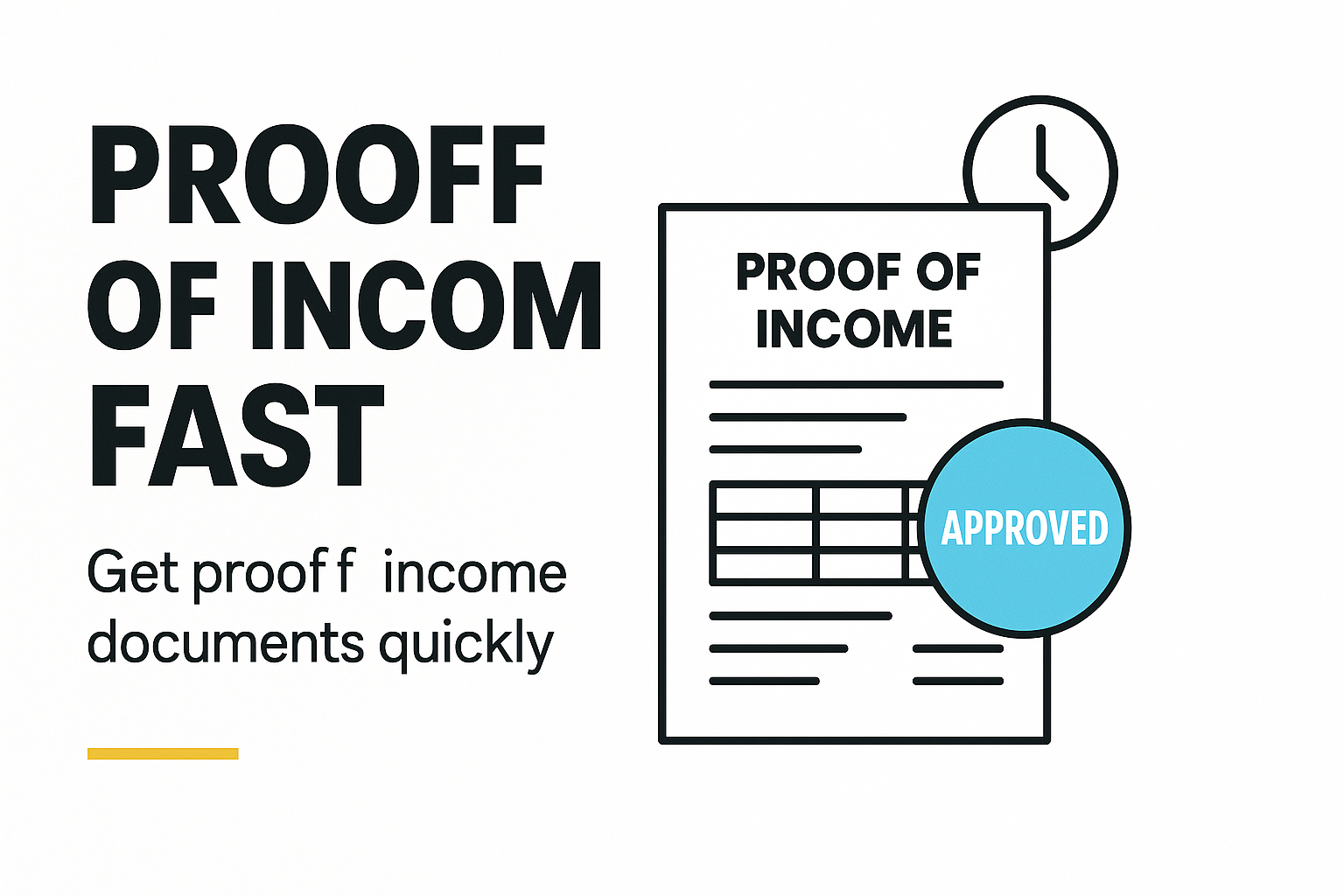
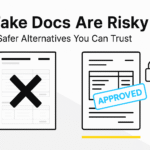
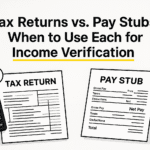
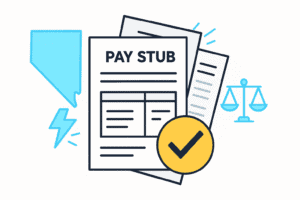
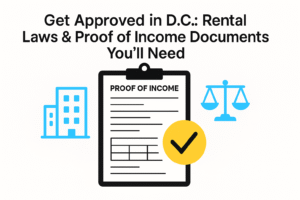
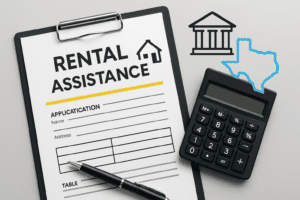
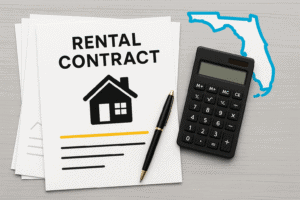

Add comment